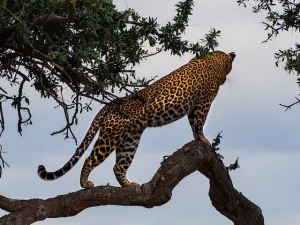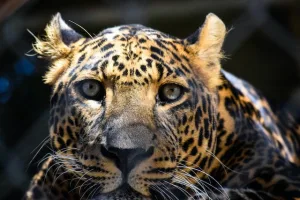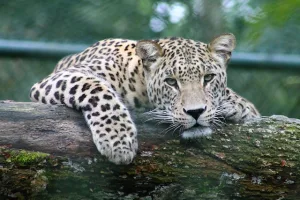Contents
- 1 Introduction
- 2 Understanding Jaguars Role as Apex Predators
- 3 Maintaining Healthy Prey Populations
- 4 Habitat Preservation and Keystone Species
- 5 Conservation Challenges and Efforts
- 6 Future Prospects and Collaboration
- 7
- 8
- 9 The Importance of Genetic Diversity
- 10 Ecosystem Services Provided by Jaguars
- 11 Cultural Significance and Conservation
- 12 Climate Change and Jaguar Habitats
- 13 The Global Impact of Local Conservation
- 13.1 Beyond Borders
- 13.2 Education and Awareness
- 13.3 Conclusion
- 13.4 FAQs
- 13.5 Q1: Are jaguars solitary animals?
- 13.6 Q2: What other animals are impacted by jaguar conservation?
- 13.7 Q3: Do jaguars have any natural predators?
- 13.8 Q4: How large is a typical jaguar territory?
- 13.9 Q5: How do jaguars contribute to seed dispersal?
 Introduction
Introduction
Jaguars, the majestic big cats of the Americas, play a vital role in maintaining the balance of their ecosystems. As apex predators, these enigmatic creatures have a profound impact on the intricate web of life within their habitats. In 2023, the significance of jaguars in their ecosystems will continue to be the subject of scientific exploration and conservation efforts.
Understanding Jaguars Role as Apex Predators
Defining Apex Predators
Apex predators are those at the top of the food chain, with no natural predators themselves. Jaguars, known scientifically as Panthera onca, fulfill this role in their ecosystems.
Role in Controlling Prey Populations
Jaguars exert control over prey populations, preventing any one species from becoming too abundant. This helps maintain biodiversity and prevent habitat degradation due to overgrazing.
 Maintaining Healthy Prey Populations
Maintaining Healthy Prey Populations
Ecological Balance
By regulating prey populations, jaguars contribute to the overall health and balance of their ecosystems. This ensures that certain plant species aren’t overconsumed, which in turn supports other animal species dependent on those plants.
Impact on Herbivore Behavior
The presence of jaguars influences the behavior of herbivores. These animals adapt by changing their grazing patterns, which has cascading effects on vegetation growth and landscape structure.
Must Read: The Best Role of Lions in African Ecosystem in 2023
Habitat Preservation and Keystone Species
Jaguars as Keystone Species
Jaguars are considered keystone species because their presence has a disproportionately large impact on their ecosystem compared to their abundance. Protecting jaguars also indirectly safeguards the integrity of their entire habitat.
Preventing Overpopulation of Smaller Predators
Jaguars help regulate populations of smaller predators, preventing these species from overpopulating and causing imbalances within the ecosystem. This ensures that other predator-prey relationships remain stable.
 Conservation Challenges and Efforts
Conservation Challenges and Efforts
Deforestation and Habitat Loss
One of the biggest threats to jaguars in 2023 is habitat loss due to deforestation and human encroachment. Jaguars Role Efforts to conserve jaguars focus on preserving their natural habitats.
Human-Jaguar Conflict
As human populations expand, conflicts between jaguars and people may arise. Jaguars Role Conservation organizations work to mitigate such conflicts through education, relocation, and innovative strategies.
Future Prospects and Collaboration
Cross-Border Conservation Initiatives
Jaguars often roam across national borders, emphasizing the need for international collaboration in their conservation. Jaguars Role Countries work together to establish protected corridors and ensure the survival of these magnificent creatures.
The Importance of Genetic Diversity
Maintaining Genetic Health
Jaguars also contribute to genetic diversity within their populations. Jaguars Role This genetic variability is essential for adapting to changing environmental conditions, disease resistance, and overall population viability.
Conservation Genetic Research
Conservationists conduct genetic studies to understand the genetic health of jaguar populations. This research aids in identifying individuals that could contribute valuable genetic traits for the species’ long-term survival.
Ecosystem Services Provided by Jaguars
Carbon Sequestration
Healthy ecosystems, maintained by apex predators like jaguars, play a role in carbon sequestration. By preventing overgrazing and maintaining balanced plant populations, jaguars indirectly contribute to climate change mitigation.
Water Regulation
Ecosystems with intact predator-prey relationships, including jaguars, contribute to water regulation. Jaguars Role These systems maintain appropriate water flows, reducing the risk of flooding and supporting water availability for other species.
Cultural Significance and Conservation
Cultural and Spiritual Value
Jaguars hold deep cultural significance for many indigenous communities. Jaguars Role They are often considered symbols of power, protection, and spiritual connection to the natural world.
Community Involvement in Conservation
Efforts to protect jaguars involve collaboration with local communities. Jaguars Role Engaging people in conservation programs not only benefits the species but also supports sustainable livelihoods and local pride.
Climate Change and Jaguar Habitats
Shifting Habitats
Climate change poses a threat to jaguars by altering their habitats. Changing temperatures and precipitation patterns could lead to shifts in vegetation and prey distribution, affecting jaguars’ survival.
Adaptation and Connectivity
Conservation plans need to consider Jaguars Role and ability to adapt to changing conditions. Establishing wildlife corridors and maintaining connectivity between different habitats become crucial strategies.
 The Global Impact of Local Conservation
The Global Impact of Local Conservation
Beyond Borders
Conserving jaguars on a local level has far-reaching impacts. By protecting apex predators, we ensure the health of entire ecosystems, contributing to global biodiversity conservation.
Education and Awareness
Raising awareness about Jaguars Role importance helps garner support for their conservation. Education programs and outreach initiatives inform people about the vital role jaguars play in maintaining healthy ecosystems.
Conclusion
As we move further into 2023, the Jaguars Role in their ecosystems continues to be a subject of fascination and scientific inquiry. These apex predators have an undeniable impact on maintaining biodiversity, regulating prey populations, and supporting the health of their habitats. The collaboration between researchers, conservationists, and local communities remains essential in safeguarding the future of these magnificent creatures and the intricate ecosystems they call home.
FAQs
Q1: Are jaguars solitary animals?
Yes, jaguars are solitary creatures, often only coming together for mating purposes.
Q2: What other animals are impacted by jaguar conservation?
Jaguar conservation indirectly benefits a wide range of species, including prey animals, scavengers, and plants within their ecosystems.
Q3: Do jaguars have any natural predators?
Jaguars are apex predators, meaning they have no natural predators, except for humans who threaten their habitats.
Q4: How large is a typical jaguar territory?
Jaguar territories can vary greatly depending on factors like prey availability and habitat quality, ranging from 25 to 150 square kilometers.
Q5: How do jaguars contribute to seed dispersal?
Jaguars play a role in seed dispersal by consuming fruits and then defecating in different areas, allowing seeds to be spread and aiding in plant growth.
Check out our other travel-related blog posts on Evoclimber.com for more tips and inspiration on exploring new destinations on a budget. The Best Role of Lions in African Ecosystem in 2023

 Introduction
Introduction Maintaining Healthy Prey Populations
Maintaining Healthy Prey Populations Conservation Challenges and Efforts
Conservation Challenges and Efforts
 The Global Impact of Local Conservation
The Global Impact of Local Conservation